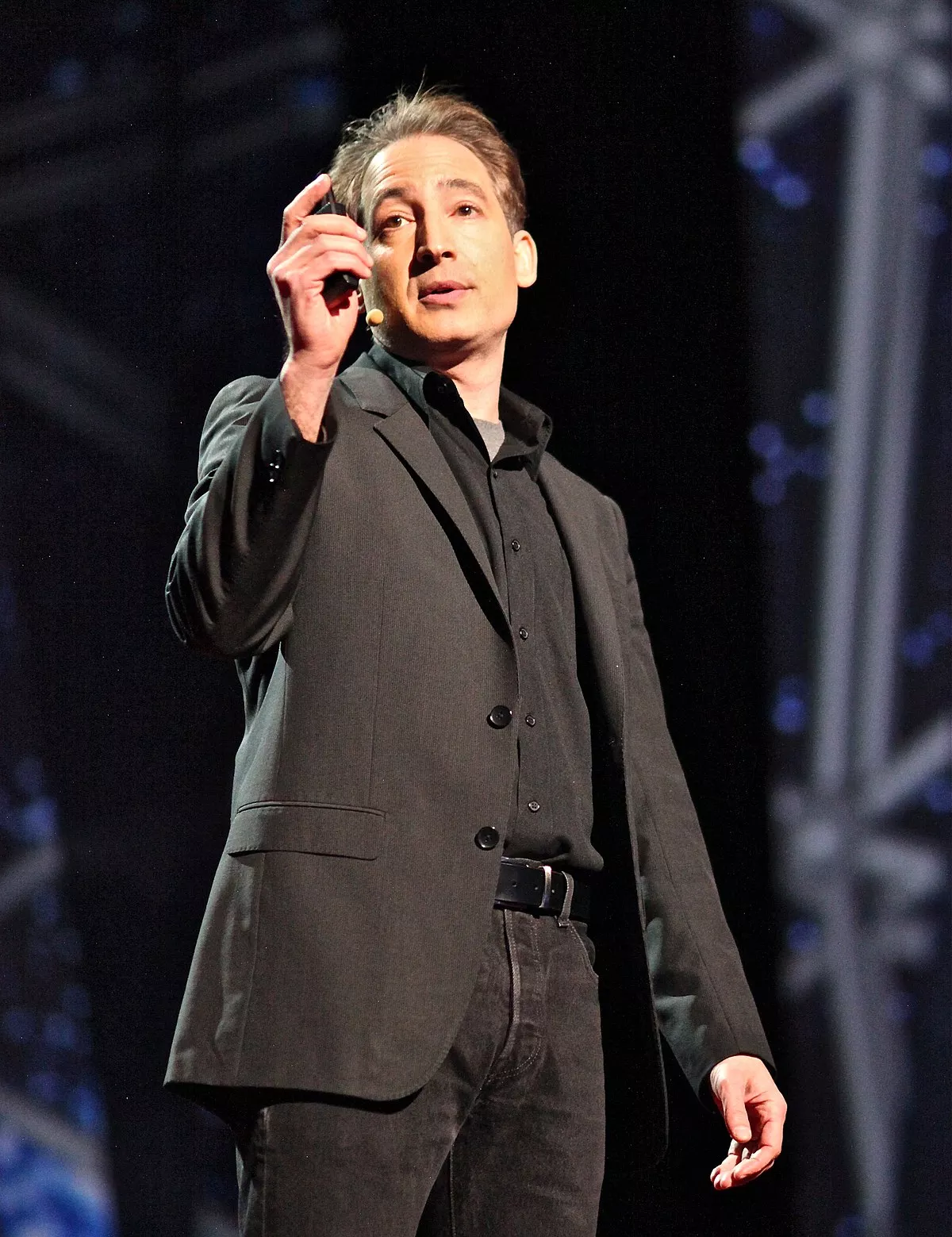 1.
1. Brian Randolph Greene was born on February 9,1963 and is an American physicist known for his research on string theory.

 1.
1. Brian Randolph Greene was born on February 9,1963 and is an American physicist known for his research on string theory.
Brian Greene is a professor of physics and mathematics at Columbia University, director of its center for theoretical physics, and the chairman of the World Science Festival, which he co-founded in 2008.
Brian Greene described the flop transition, a mild form of topology change, and the conifold transition, a more severe transformation of space, showing that topology can smoothly change in string theory.
Brian Greene appeared on The Big Bang Theory episode "The Herb Garden Germination", as well as in the films Frequency and The Last Mimzy.
Brian Greene was born in New York City of Jewish background.
Brian Greene's father, Alan Greene, was a one-time vaudeville performer and high school dropout who later worked as a voice coach and composer.
Brian Greene then did doctoral study in theoretical physics at Magdalen College, Oxford, under Graham Ross and James Binney.
Brian Greene received a Doctor of Philosophy in 1987 with a thesis entitled "Superstrings: topology, geometry and phenomenology and astrophysical implications of supersymmetric models".
Brian Greene joined the physics faculty of Cornell University in 1990, received tenure in 1993, and was appointed to a full professorship in 1995.
At Columbia, Brian Greene is director of the university's center for theoretical physics and is leading a research program at the intersection of string theory, mathematical physics, and cosmology.
Brian Greene is known for his contribution to the understanding of the different shapes the curled-up dimensions of string theory can take.
Brian Greene has studied string cosmology, especially the imprints of trans-Planckian physics on the cosmic microwave background, and brane-gas cosmologies that could explain why the space around us has three large dimensions.
Brian Greene's work has expanded on the suggestion of a black hole electron, namely that a black hole can continuously transform into a particle such as an electron.
Currently, Brian Greene is studying non-simply connected and non-orientable compactifications and has showed that in some of these contexts, signals can have an effective speed greater than that of light, and even travel back in time.
Brian Greene is well known to a wider audience for his work on popularizing theoretical physics, in particular string theory and the search for a unified theory of physics.
Brian Greene's first book, The Elegant Universe: Superstrings, Hidden Dimensions, and the Quest for the Ultimate Theory, published in 1999 and a New York Times Best Seller, is a popularization of superstring theory and M-theory.
Brian Greene's third book, The Hidden Reality: Parallel Universes and the Deep Laws of the Cosmos, published in January 2011, was a New York Times Best Seller and deals in greater depth with multiple universes, or, as they are sometimes referred to collectively, the multiverse.
Brian Greene's most recent book, Until the End of Time: Mind Matter and Our Search for Meaning in an Evolving Universe, was a New York Times Best Seller and explores the universe's evolution and likely end, as well as the emergence of life and consciousness, bridging cosmological and existentialist thought.
Brian Greene was featured in ABC's Nightline in Primetime: Brave New World series.
Brian Greene worked with by composer Philip Glass, playwright David Henry Hwang, filmmakers AL and AL, and executive producer Tracy Day to adapt Brian Greene's novella Icarus at the Edge of Time, which is a futuristic re-telling of the Icarus myth, into a stage work for full orchestra, film, and narrator.
Greene wrote the stage work Time, Creativity and the Cosmos, exploring the origin of the universe, life, and creative expression, which premiered on May 30,2017 at Lincoln Center's Rose Theater, with Greene in the role of narrator and performers Pilobolus, Joshua Bell, Renee Fleming, Brian Stokes Mitchell, and David Draiman.
Brian Greene was interviewed at length by Jim Al-Khalili on the BBC radio program The Life Scientific on 28 April 2020.
Brian Greene was a technical consultant for the film Frequency, in which he had a cameo role.
Brian Greene was a consultant on the 2006 time-travel movie Deja Vu.
Brian Greene had a cameo appearance as an Intel scientist in 2007's The Last Mimzy.
Brian Greene was mentioned in the 2002 Angel episode "Supersymmetry" and in the 2008 Stargate Atlantis episode "Trio".
Brian Greene has lectured outside of the collegiate setting, at both a general and a technical level, in more than twenty-five countries and all seven continents.
Brian Greene was listed by one commentator as a possible nominee for the position of Science Laureate, if the act were to pass.
Brian Greene has been vegetarian since he was nine years old and a vegan since 1997.
Brian Greene has stated that he regards science as being incompatible with literalist interpretations of religion and that there is much in the New Atheism movement which resonates with him because he personally does not feel the need for religious explanation.